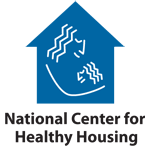|
|
Materials & Furnishings
We do not strictly control Google ad content. If you believe any Google ad is inappropriate, please email us directly here.
Sort results by: Date Added | Alphabetically - A renovation project is the perfect time to turn your home into a greener building.
- Contaminants in house dust are an important source of exposure that can be reduced by good design, good flooring choices, and good cleaning practices.
- You will likely not be sleeping alone tonight.
- What's under your kitchen sink, in your garage, in your bathroom, and on the shelves in your laundry room? Do any of the household products you use pose a potential health risk to you and your family? An online consumer guide from NIH's National Library of Medicine (NLM) provides easy-to-understand information on the potential health effects of more than 4,000 common household products.
- A national population study reveals the prevalence of multiple chemical sensitivities.
- Infrared (IR) cameras, like infrared thermometers, are used to detect surface temperature differences in your home. Here's how they help Clean Trust-Certified experts ensure your home is dry after a flood or other water intrusion.
- EPA has added an indoor air quality component to the already well-known Energy Star program—the Energy Star Indoor Air Package (IAP).
- An insulation's resistance to heat flow is measured or rated in terms of its thermal resistance or R-value.
- To solve the public health and material-related costs associated with mold and other fungi, many companies are now engineering advanced materials capable of resisting mold and fungal growth.
- Keeping your home clean and dry is an important way to keep it healthy.
- Consider everything from energy use to the ideal lighting conditions in your home before selecting permanent or free-standing lamps.
- National Healthy Homes Conference to address serious health and safety concerns in housing.
- The chemicals we're exposed to indoors, how they may affect our health, and what the government is - and perhaps isn't - doing about it.
- John Bower's presentation at the Energy Efficient Building Association, Excellence in Housing Conference, Dallas Texas, February 1994.
- Use the principles of separation, elimination, and ventilation to deal with pollutants originating from any source.
- Many commercial mattresses are manufactured using polyurethane, synthetic fabrics, chemical fire retardants, toxic dyes, formaldehyde and stain-resistant chemicals. These chemicals are outgassed over time, and can expose skin and lungs to potentially toxic substances, causing allergic reactions and other health problems.
- Energy-efficient glass with a low-E coating is one of several types of insulated glass.
- Insulations are made from different materials. Many people are concerned about the possible negative health effects.
- Insulation is needed in warm climates to keep the heat outside and in cold climates to keep the heat inside.
- From The Healthy House Answer Book: Answers to the 133 most commonly asked questions. Questions 99-110.
We do not strictly control Google ad content. If you believe any Google ad is inappropriate, please email us directly here.



Information provided by The Healthy House Institute is designed to support,
not to replace the relationship between patient/physician or other qualified
healthcare provider.
Education Partners
Ads, ad links, products and content on this page are not necessarily endorsed by these organizations.
|

We do not strictly control Google ad content. If you believe any Google ad is inappropriate, please email us directly here.
|








